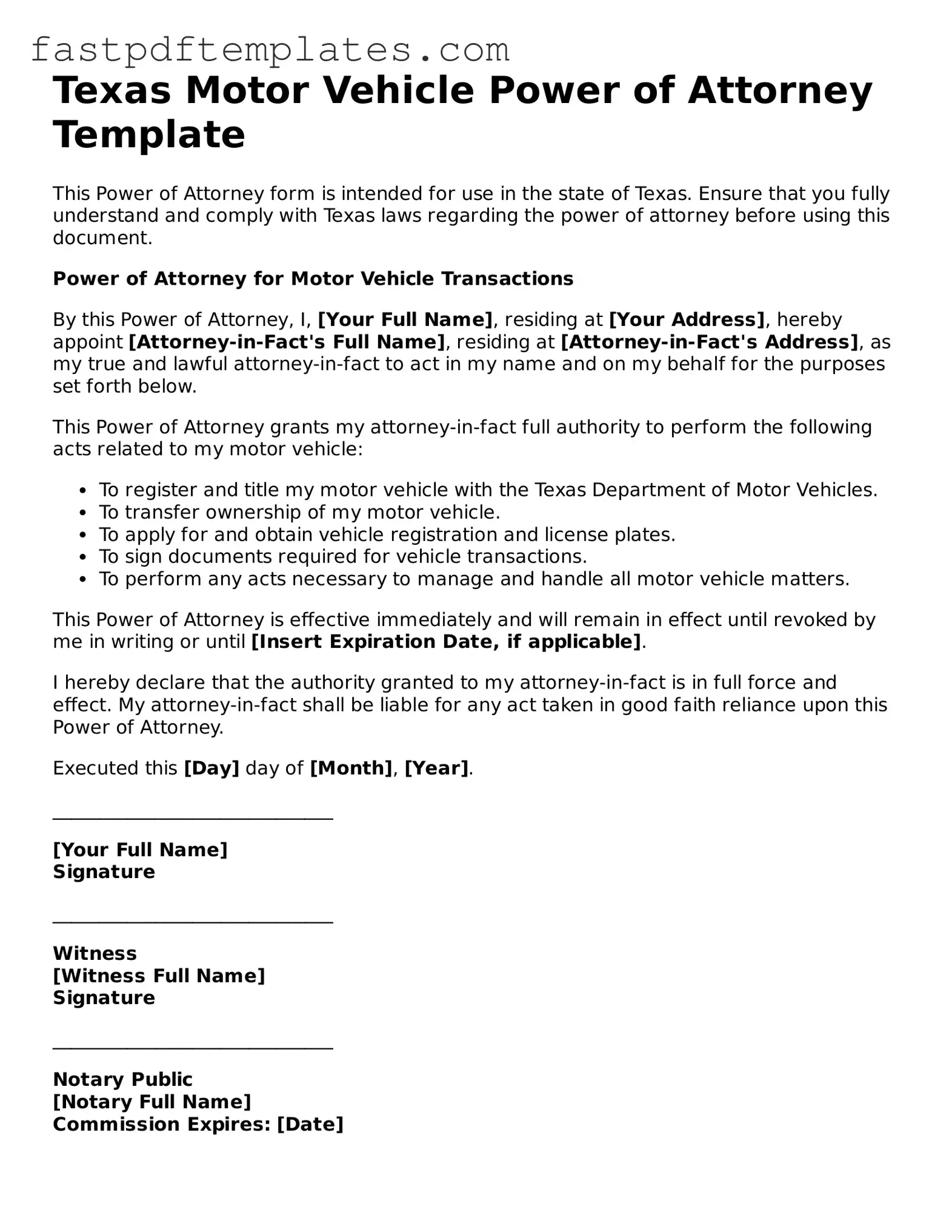Texas Motor Vehicle Power of Attorney Template
This Power of Attorney form is intended for use in the state of Texas. Ensure that you fully understand and comply with Texas laws regarding the power of attorney before using this document.
Power of Attorney for Motor Vehicle Transactions
By this Power of Attorney, I, [Your Full Name], residing at [Your Address], hereby appoint [Attorney-in-Fact's Full Name], residing at [Attorney-in-Fact's Address], as my true and lawful attorney-in-fact to act in my name and on my behalf for the purposes set forth below.
This Power of Attorney grants my attorney-in-fact full authority to perform the following acts related to my motor vehicle:
- To register and title my motor vehicle with the Texas Department of Motor Vehicles.
- To transfer ownership of my motor vehicle.
- To apply for and obtain vehicle registration and license plates.
- To sign documents required for vehicle transactions.
- To perform any acts necessary to manage and handle all motor vehicle matters.
This Power of Attorney is effective immediately and will remain in effect until revoked by me in writing or until [Insert Expiration Date, if applicable].
I hereby declare that the authority granted to my attorney-in-fact is in full force and effect. My attorney-in-fact shall be liable for any act taken in good faith reliance upon this Power of Attorney.
Executed this [Day] day of [Month], [Year].
______________________________
[Your Full Name]
Signature
______________________________
Witness
[Witness Full Name]
Signature
______________________________
Notary Public
[Notary Full Name]
Commission Expires: [Date]
